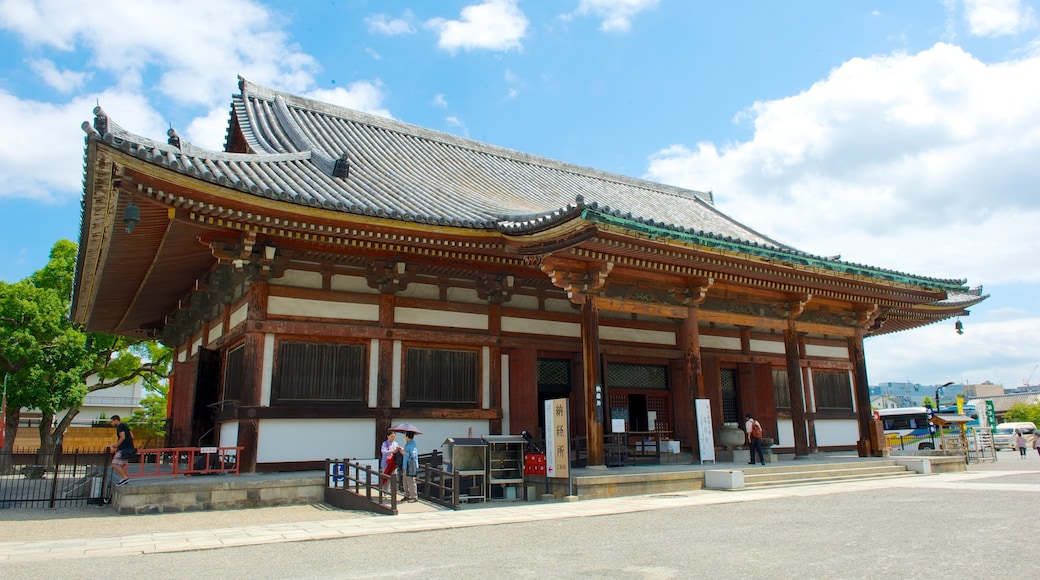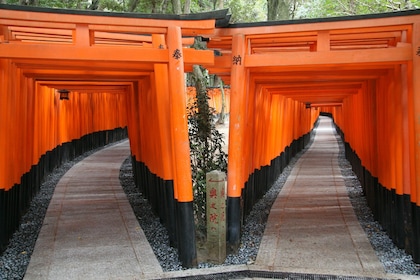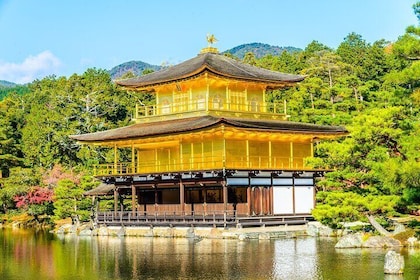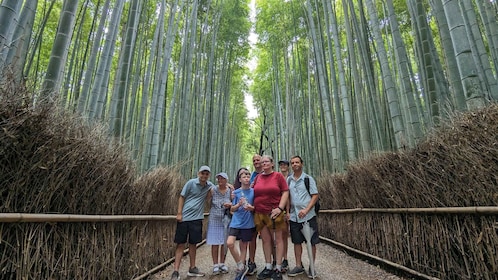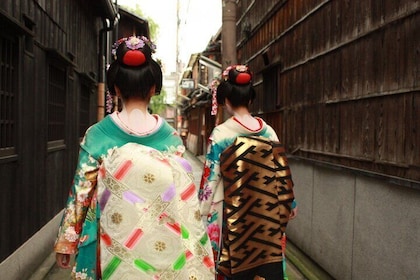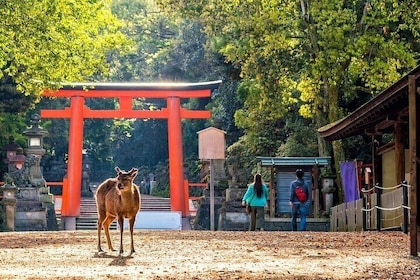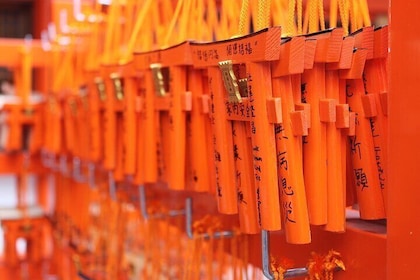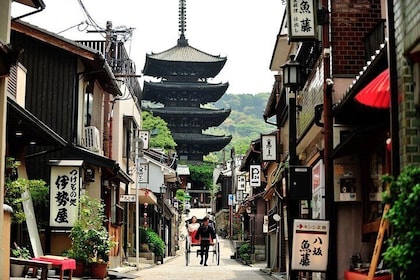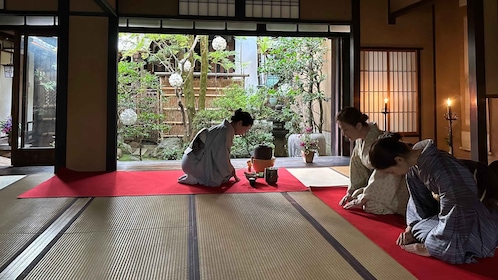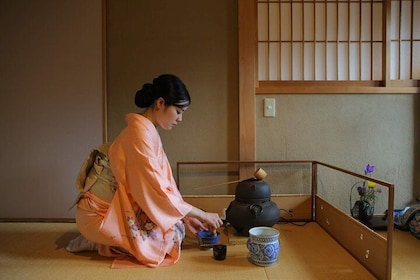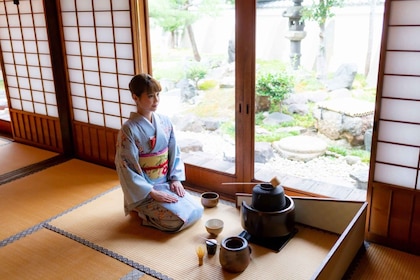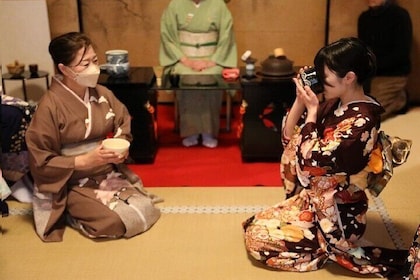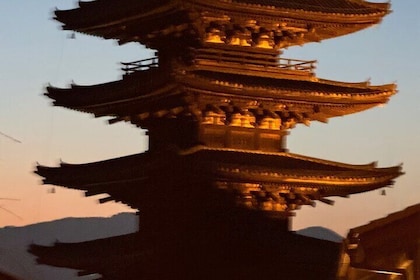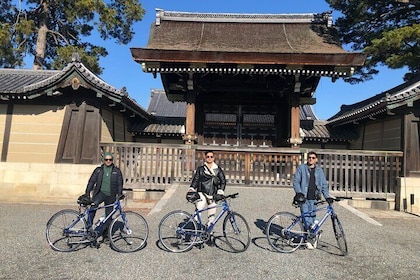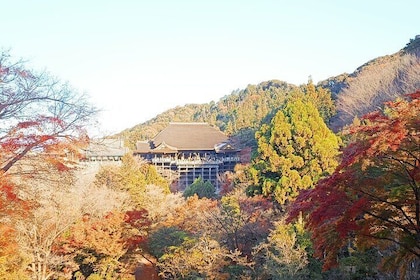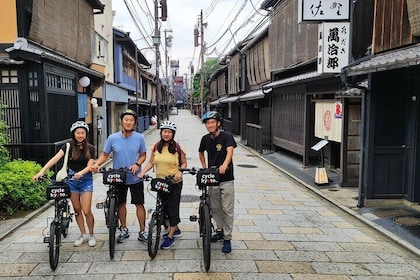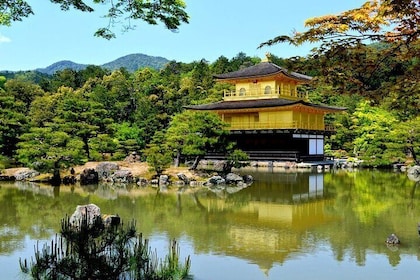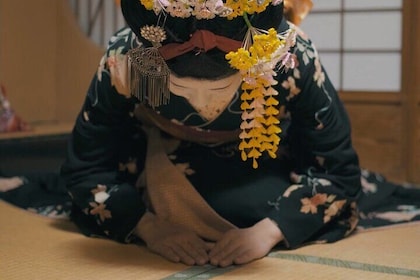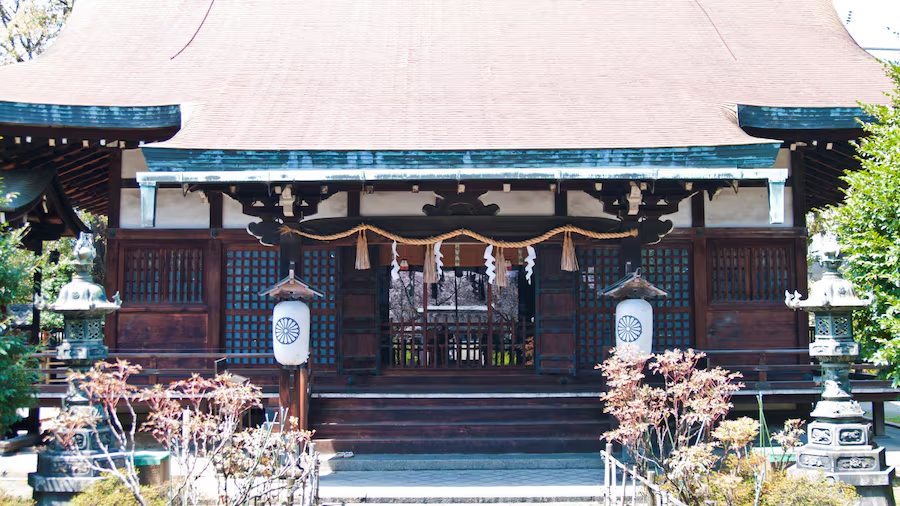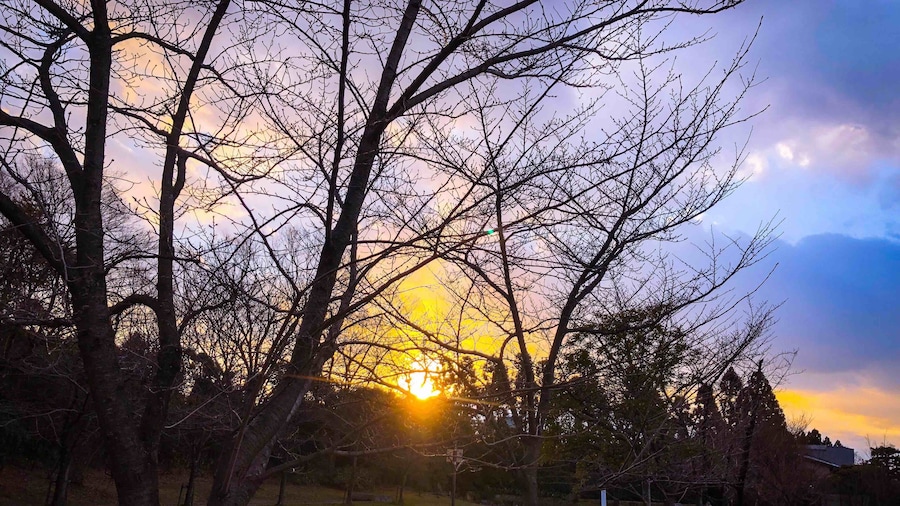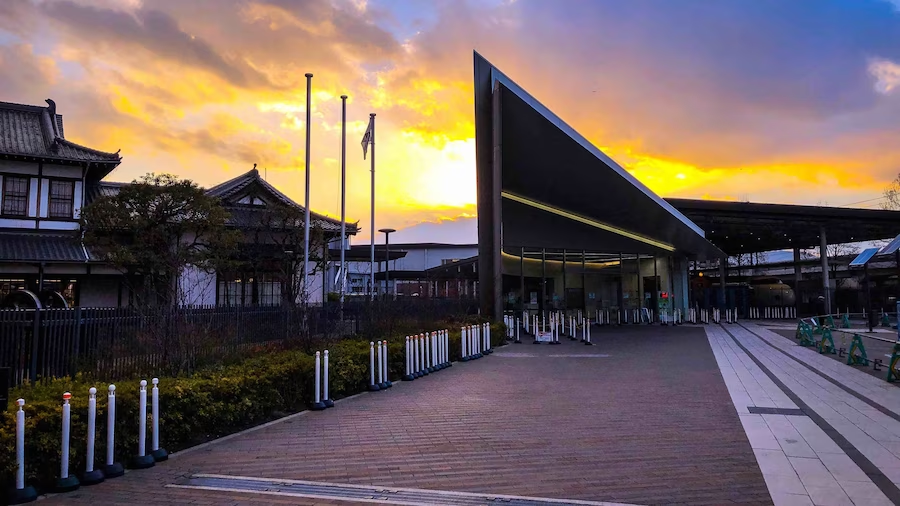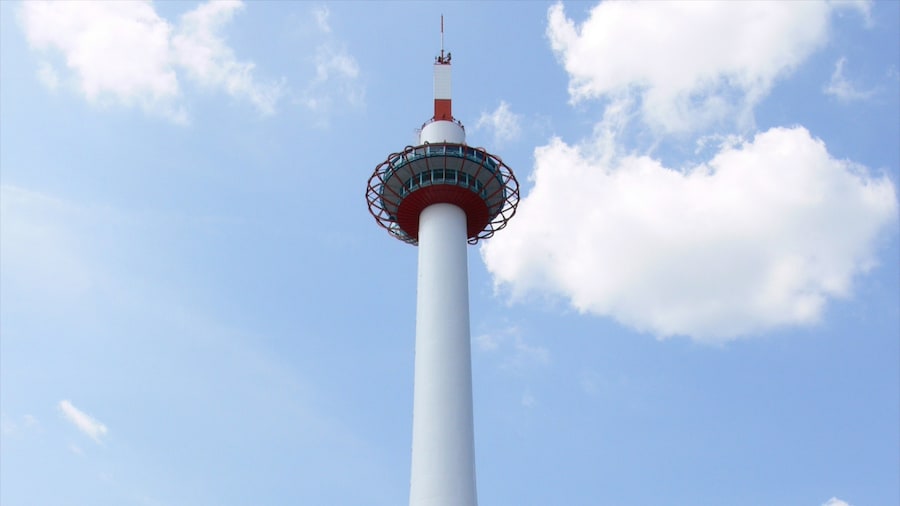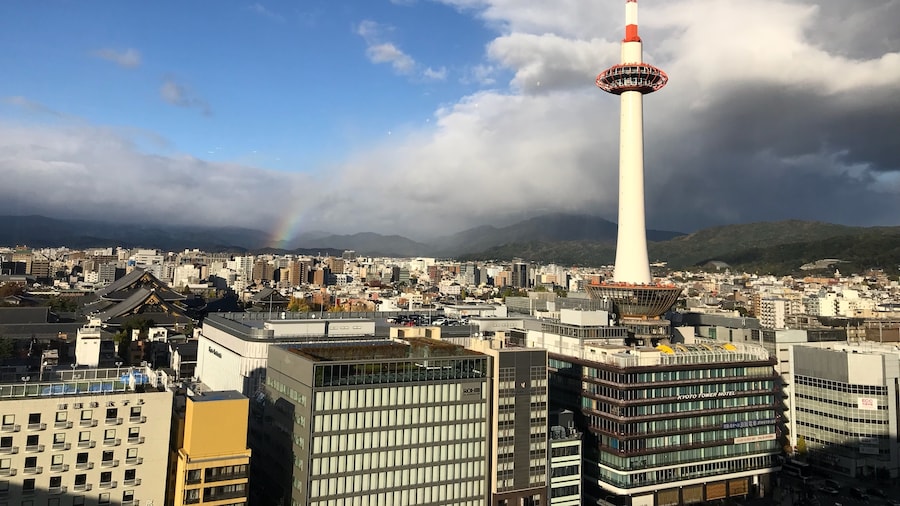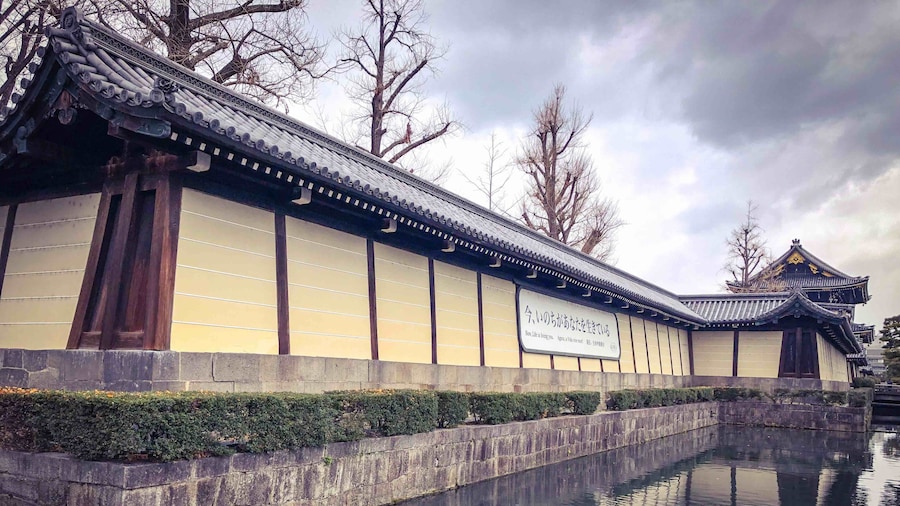The To-ji Temple is one of the preeminent traditional sites in Kyoto, with exquisite structures, a flea market and the tallest pagoda in the country.
Remarkably, this Buddhist temple was constructed more than a millennium ago. Now, it is one of the main tourist attractions in Kyoto. After a destructive fire in the 15th century, it survives today as a prominent illustration of ancient Japanese architecture. Among other impressive structures, the temple houses the tallest pagoda in Japan, which can be seen for miles around. Tourists and locals alike flock here once a month for the flea market in the surrounding parkland.
Wander around the Kondo Hall, the largest structure of the temple. Check out the imposing wooden statue of Yakushi Buddha. Peruse the 19 statues imported from China in the Kodo Hall. Both rooms were damaged by a fire in 1486 and later rebuilt. There is a reasonable entrance fee for the halls. From the admission-free area, gaze up at the tallest pagoda, a traditional-style tiered tower, in Japan. Its five stories can be seen from across the city and stand 187 feet (57 metres) high.
Make your way to the Homotsukan Museum for statues, authentic ornaments and other relics from times past. Browse the dynamic flea market bustling with buyers and sellers on the 21st day of every month. Haggle for second-hand bargains and artefacts varying from clothes and toys to food and plants. Scrutinize the antiques at a smaller market on the first Sunday of every month.
The temple dates back to the beginning of the Heian Period in the late eighth century. At the south entrance of the city, it served as a guardian temple. It was partially destroyed by a fire in 1486. Its name translates as East Temple – there was originally a western equivalent called Sai-ji.
To-ji Temple is based in Minami-ku at the corner of Omiya and Kujo streets. It is a 1.2-mile (1.9-kilometre) walk from Kyoto Station, a futuristic hub of transportation that sits on multiple train lines and holds the city’s largest bus terminal. To-ji Station is closer, and lies on the Kintetsu Kyoto Line.
